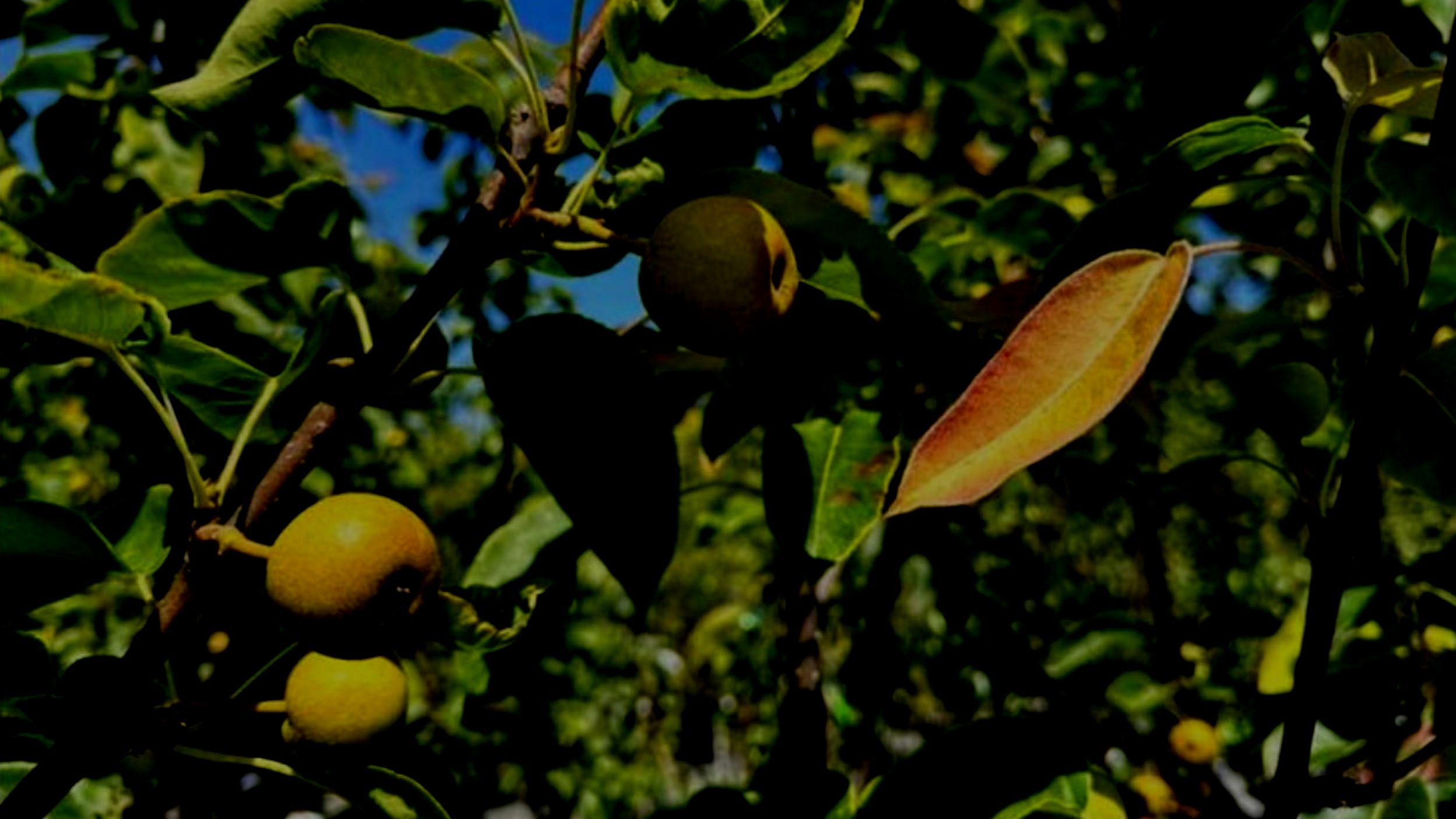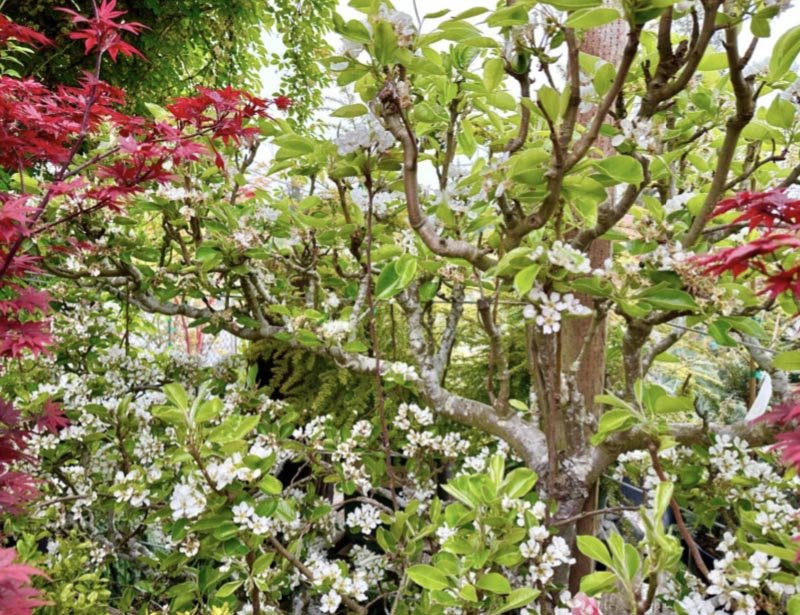A huge trend in gardening over the last decade or so has been cultivating your very own homegrown fruit. The pandemic intensified this practice, and it seemingly continues to become more and more popular for our patrons at Sunnyside, season after season. While most all endeavors in the garden are gratifying to me, there is something extra special about growing your own edibles, including fruit. Whether you are adding to an existing garden or starting anew, some planning and a few points to ponder will help you to grow fruit successfully.
First, let’s talk about our Western Washington maritime climate versus Eastern Washington’s. Growing happy fruit trees starts with two main parameters: what we call “chilling hours” (how many hours of cold we get in dormant winter time) and “heat in summer/length of summer” (which is a huge factor in ripening time or lack thereof). Our fine state is a bit unique with two totally separate climes – Eastern WA has plenty of both but not so much for Western WA in most years, especially the summer heat. This is why we struggle more to grow many of the grocery store/commercial varieties of fruit on this side of the mountains. We can, however, still grow some fabulous fruit trees by choosing the right variety, increasing ripening and cutting out additional maintenance.
To me the two HUGE differences in our specific area are mostly rainy spring weather (newsflash!) and length of summer sun. Extended periods of rain often brings disease, which could mean issues like Apple Scab, Pear Rust, Peach Leaf Curl, and Brown Rot (most prevalent on cherries and plums). Never think of any of these as “the plague”, as all diseases can be controlled with natural organic sprays and no gardener in Western Washington needs to avoid fruit because of them. There are a number of disease resistant choices for most types of fruit, and my hope is that you will ask a professional about your options in order to easily achieve success in your home orchard.
Now, before we delve any further into this discussion, I would be doing our local pollinators a huge disservice by not mentioning them. No pollination means no fruit, period. When fruit trees pop into bloom in early spring (timing will depend on the specific type), we need our mason bees to pollinate them. This often involves bees cross pollinating two varieties for production to occur on both. Help make all of our pollinating friend’s lives easier and keep your orchard pesticide free, first and foremost, by always utilizing safe products and organic soils and fertilizers. This also means shortening their potential journey by planning out your orchard so that the bees can hop from tree to tree and not over your house. There are lots of options of varieties that are classified as “self-fertile” (meaning you just need one tree and bees will pollinate bloom to bloom), while others need “cross-pollination” (meaning bees must go back and forth between two compatible trees in order to get fruit on both). Perhaps even consider adding a mason bee hive to your yard. This is sometimes confusing, but again, always ask a nursery professional, who can make sure you have your pollination covered simply and effectively.
Now let’s talk about a couple of space saving ideas. Many of us have smaller city lots and lack the room for an old-school traditional farm-size orchard, but we can still have fruit trees by choosing wisely. First consideration is always about the rootstock – what your desired variety is grafted onto as far as root system means everything. With apples, for example, we can choose “mini-dwarf” rootstock, and grow a tree that is more manageable and conserves space. Second, consider “combination” type trees – these have multiple varieties grafted on the same tree. If we use apples again as an example, instead of having to plant multiple trees needed for cross-pollination, we can simply have a “combo” apple and we (and the bees of course) are all set, buzzing from branch to branch instead of tree to tree. Also consider planting fruit trees trained in “espalier” form. These also have multiple varieties on one tree and are grown/trained along sunny fence lines, staying lower and attaining a tighter spreading shape. Finally, look at “columnar” choices – many apple varieties, for example, grow up but not out too far – allowing for more trees in a smaller garden. Many of these “columnar” choices, and some “mini-dwarfs” as well, can even be grown in large containers long term, adding yet another option since you can place that pot anywhere in a sunny location.
I sincerely hope that you will consider growing (or expanding) your own home orchard, whether large or small. Start with some planning and research by visiting your local garden center, looking for varieties that are the most disease resistant, space efficient and reliable. I have a feeling that not only will be you be successful, but you will enjoy eating and perhaps sharing the bounty with family and friends. Next week we will talk more about fruit and get into some specific varieties!
Trevor Cameron is a Certified Professional Horticulturist (CPH) and serves as General Manager for Sunnyside Nursery in Marysville, WA. He can be reached at sunnysidenursery@msn.com




